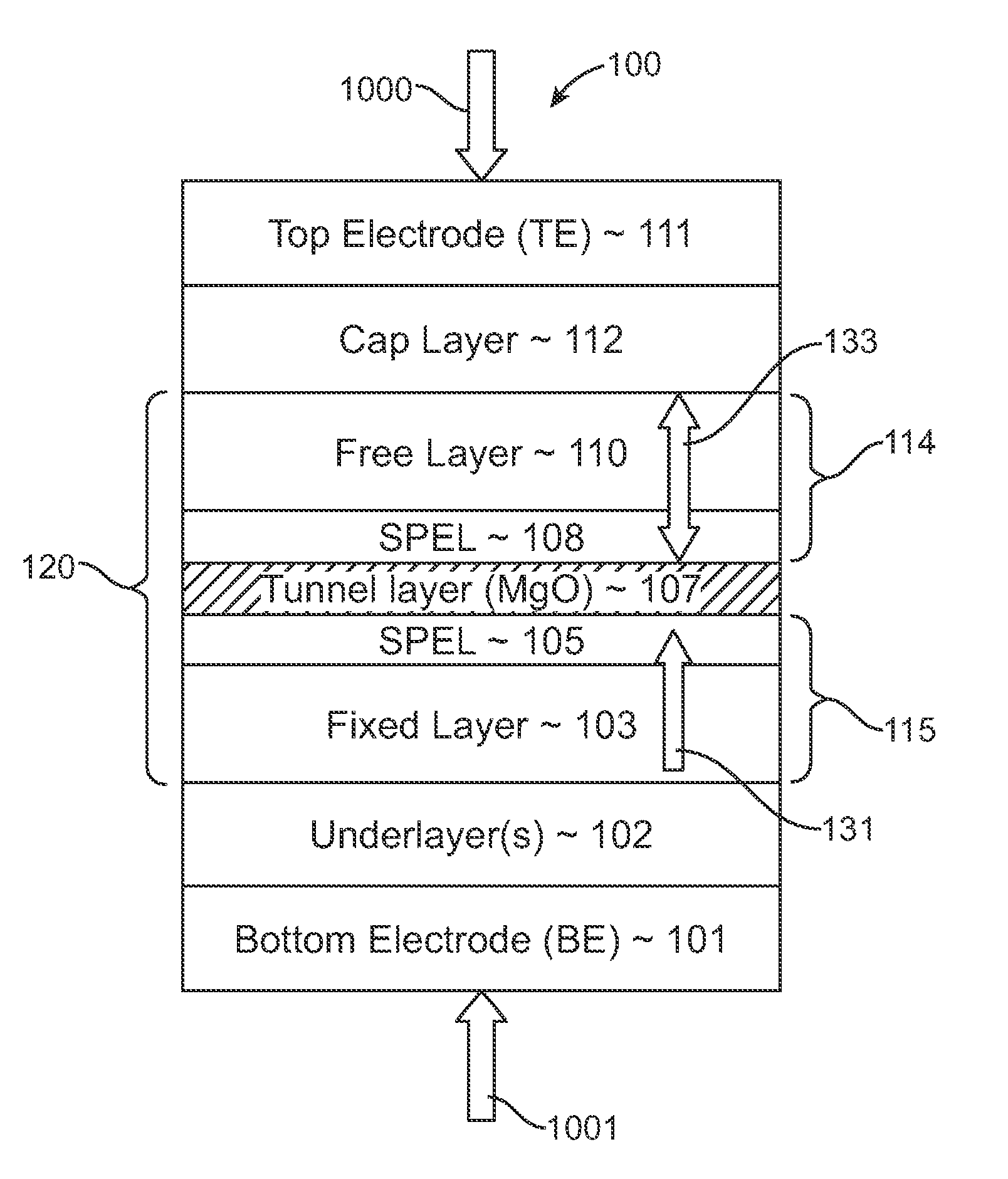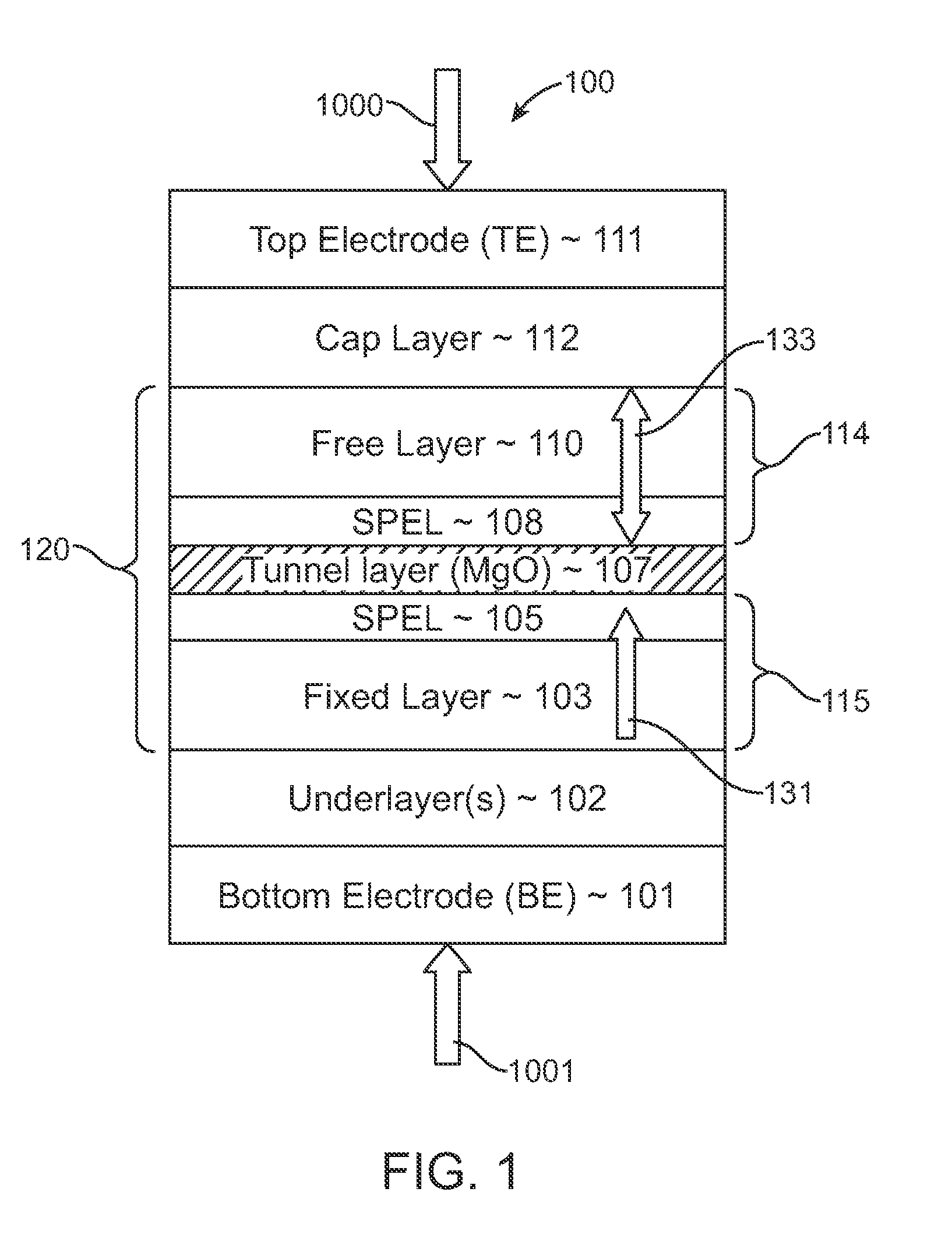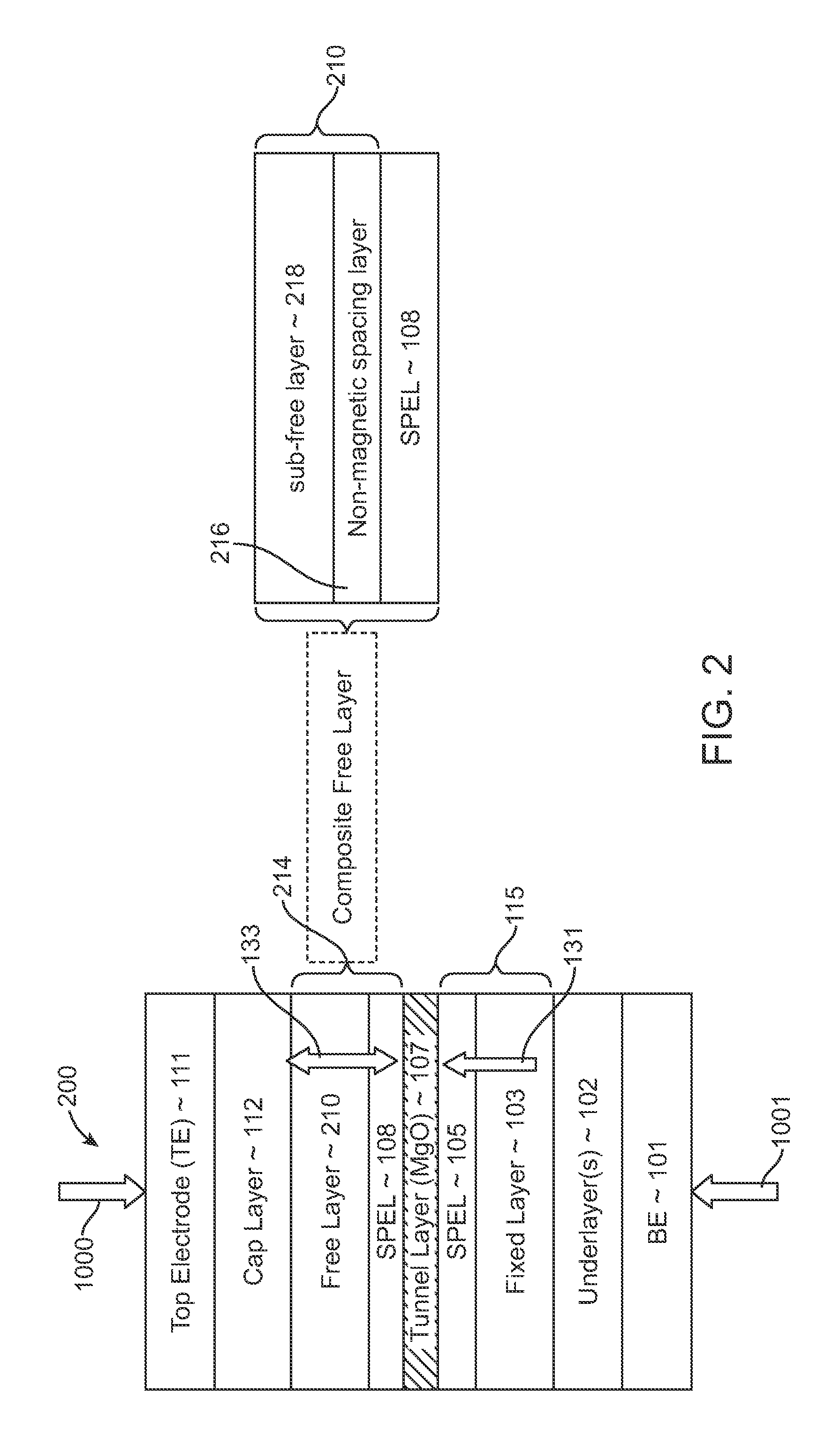Spin-transfer torque magnetic random access memory having magnetic tunnel junction with perpendicular magnetic anisotropy
a magnetic random access memory and spin-transfer torque technology, applied in the field of spin-transfer torque magnetic random access memory (mram), can solve the problems of high write current, preventing its adoption in consumer devices, and complex cell architectur
- Summary
- Abstract
- Description
- Claims
- Application Information
AI Technical Summary
Benefits of technology
Problems solved by technology
Method used
Image
Examples
Embodiment Construction
[0021]In the following description of the embodiments, reference is made to the accompanying drawings that form a part hereof, and in which is shown by way of illustration of the specific embodiments in which the invention may be practiced. It is to be understood that other embodiments may be utilized because structural changes may be made without departing from the scope of the present invention. It should be noted that the figures discussed herein are not drawn to scale and thicknesses of lines are not indicative of actual sizes.
[0022]In accordance with an embodiment of the present invention, a spin-transfer torque magnetic random access memory (STTMRAM) element includes a magnetic tunnel junction (MTJ) having a fixed layer and a free layer wherein the magnetic orientation of fixed layer and free layer is substantially perpendicular to the plane of the layers. The selection of the magnetic alloy for use in each of the fixed layer and the free layer, as disclosed herein, advantageo...
PUM
| Property | Measurement | Unit |
|---|---|---|
| thickness | aaaaa | aaaaa |
| magnetization | aaaaa | aaaaa |
| crystalline | aaaaa | aaaaa |
Abstract
Description
Claims
Application Information
 Login to View More
Login to View More - R&D
- Intellectual Property
- Life Sciences
- Materials
- Tech Scout
- Unparalleled Data Quality
- Higher Quality Content
- 60% Fewer Hallucinations
Browse by: Latest US Patents, China's latest patents, Technical Efficacy Thesaurus, Application Domain, Technology Topic, Popular Technical Reports.
© 2025 PatSnap. All rights reserved.Legal|Privacy policy|Modern Slavery Act Transparency Statement|Sitemap|About US| Contact US: help@patsnap.com



